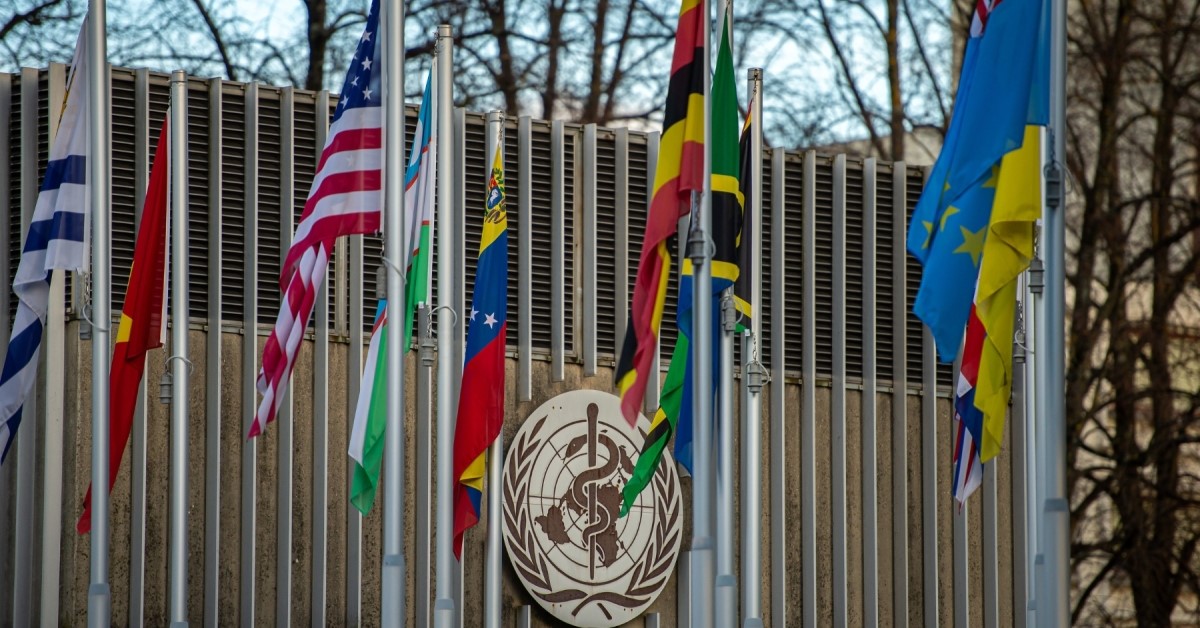U.S. Withdrawal from WHO: Causes and Impacts
Syllabus:
GS-2:
Bilateral Groupings & Agreements , Effect of Policies & Politics of Countries on India’s Interests , Indian Diaspora ,Groupings & Agreements Involving India and/or Affecting India’s Interests
Focus:
On January 20, 2025, Donald Trump announced the U.S.’s withdrawal from the World Health Organization, citing bias toward China and pandemic mismanagement. This decision, accompanied by halting funding and personnel recall, threatens global health programs and raises concerns over leadership voids in international health governance.
Introduction to the Decision:
- Trump’s Announcement (2025):
- On January 20, 2025, Donald Trump signed an executive order for the S. to withdraw from the World Health Organization (WHO).
- Allegations included bias towards China and mishandling the COVID-19 pandemic.
- Historical Context:
- Trump attempted a similar withdrawal in 2020 but was reversed by Joe Biden’s administration.
About World Health Organization (WHO):
- United Nations agency for global health and safety.
- Establishment: April 7, 1948 (celebrated as World Health Day).
- Operational Start: 1951, merging with the Health Organisation of the League of Nations.
- Headquarters: Geneva, Switzerland.
Aim and Functions:
Aims
- Ensure universal health coverage and promote health equity.
- Strengthen disease prevention and control worldwide.
- Enhance global preparedness and response to health emergencies.
Functions
- Set global health standards and guidelines.
- Monitor emerging health issues and coordinate responses.
- Provide technical assistance for capacity building in countries.
- Facilitate health research and policy development.
What WHO Does?
- Sets standards for public health.
- Provides technical assistance and support to countries.
- Detects, prevents, and responds to health emergencies.
- Collaborates with governments, civil society, and private sectors.
- Strengthens health systems, especially primary care.
Funding Structure of WHO:
- Two Main Funding Sources
- Assessed Contributions
- Mandatory payments from member states based on wealth and population.
- Covers less than 20% of the total budget.
- Contributions:
- U.S.: 22.5% (~$138M)
- China: 15% (~$87.6M)
- Voluntary Contributions
- Provided by member states, private organizations, and philanthropic foundations.
- Account for ~80% of the budget.
- Contributions:
- U.S.: 13% of voluntary funding (~$356M in 2023)
- Bill & Melinda Gates Foundation: Second-largest donor
Public Sentiment on WHO:
- Americans’ Opinions:
- A 2024 Pew Research Center survey revealed growing dissatisfaction:
- 40% of Americans believed the S. benefited “not at all” or “not too much” from WHO membership, up from 34% in 2021.
- Republicans were significantly less likely than Democrats to see value in WHO:
- 80% of Democrats in 2024 said the U.S. benefits, compared to only 38% of Republicans.
- Global Comparison:
- In 2020, 45% of Americans supported Trump’s WHO criticism, while lower figures were seen in:
- K. (34%), Canada (31%), and Germany (30%).
- Political Divide:
- Conservative Republicans showed the least support for S. membership in WHO.
Financial Implications:
- Impact on WHO Funding:
- The S. is the largest contributor to WHO, providing 15% of total funding since 2016-17.
- Contributions fell to 9% during the COVID-19 pandemic but rebounded to $1.2 billion for 2022-23.
- In 2024-25, other major contributors included:
- Bill and Melinda Gates Foundation (12.9%), GAVI Alliance (9.91%), European Commission (8.06%), and World Bank (5.34%).
- China’s contribution stood at just 3%.
- Potential Financial Gap:
- No single country contributes more than 5%, making it unlikely for any nation to fill the void left by the U.S.
- Germany and the K., second and third largest contributors, are far behind the U.S.
Programmatic Effects on WHO Initiatives:
- Allocation of U.S. Funds (2024-25):
- 26%: Improving access to quality health services.
- 21%: Rapid response to acute health emergencies.
- 20%: Polio eradication.
- 10%: Prevention of epidemics and pandemics.
- Consequences of Funding Loss:
- Programs reliant on S. funding, such as health emergency responses and disease prevention, may face significant setbacks.
- Polio eradication efforts, in particular, could suffer.
Broader Implications:
- Impact on Collaboration:
- The S. has the most WHO collaboration centers (79), conducting research and implementing WHO objectives.
- The recall of U.S. personnel from these centers may disrupt global health projects.
- Geopolitical Repercussions:
- With reduced U.S. engagement, other countries or organizations might gain influence within WHO.
- There is uncertainty about whether countries like Germany or foundations like Gates can offset the leadership void.
Conclusion:
The U.S. withdrawal from WHO under Donald Trump reflects deep political and public divides. While it satisfies domestic critiques, it jeopardizes the global health system by creating funding and leadership gaps. Addressing these challenges will require global cooperation and significant financial commitments from other nations or private entities.
Source: TH
Mains Practice Question:
Discuss the implications of the U.S.’s withdrawal from the World Health Organization on global health initiatives. Analyze the potential financial, programmatic, and geopolitical challenges arising from this decision. Suggest measures that can be taken by the international community to mitigate these impacts.




